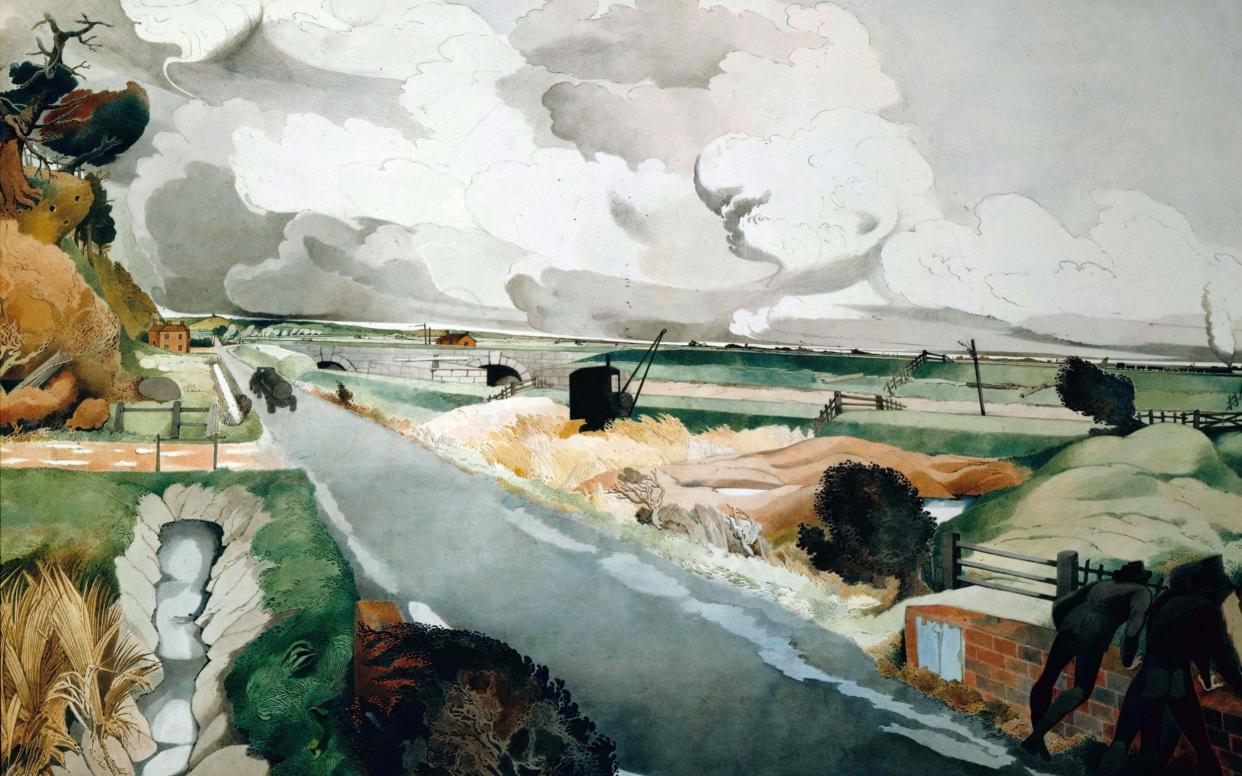The Age of Turmoil review, Hastings Contemporary: staring into a cloudy, smoke-filled abyss

While lunching with friends on a fine Madrid day in 1936, the British painter Edward Burra enquired about palls of smoke he saw drifting past. “Oh it’s nothing. It’s only a church being burnt,” his companions responded dismissively. Burra later recalled, “Everybody knew that something appalling was about to happen.”
Ominous clouds brew across a number of the paintings in this small, intriguing exhibition of three British artists who worked during the turbulent period between the depression and the post-war years of austerity. It was, of course, the worst of times, with global conflict, rising populism and economic stagnation accompanied by fear and pessimism. In Graham Sutherland’s Welsh landscape with yellow lane (1939-1940), a gathering black mass threatens to obscure the sun, while portentous plumes of smoke rise beyond the horizon. The sense of anxiety is palpable.

The Spanish Civil War eclipsed Burra’s previously vibrant vision. Out went his wry observations of a raucous humanity at play in Harlem jazz clubs or at the Folies Bergère in Paris. In their wake rose nightmarish works that resemble surrealist stage sets. In War in the Sun (1938), for instance, muscular conquistadors posture around an armoured vehicle, while commedia dell’arte characters hunch in the shadows of buildings pockmarked by war. A curtain is drawn back, revealing a truck heading off to a pastoral landscape. Perhaps refugees are being transported to safety? Or is Burra anticipating the conflict reaching his own East Sussex doorstep?
Suffering from acute arthritis, Burra spent the war capturing the hubbub of homefront military activity in Rye. Sutherland, meanwhile, painted the shattered remains of blitzed Britain. His elusive Armoured Form (1950) rises sentinel-like over a twisted city, casting a dark shadow, perhaps of a disabled war veteran. Profoundly disturbed by photographs of Holocaust victims, Sutherland read them as “figures deposed from crosses”. His disfigured Crucifixion (1947) became a symbol of the “continuing beastliness and cruelty of mankind amounting at times to madness.”

As an Official War Artist in Port Glasgow, Stanley Spencer had an epiphanic moment witnessing the shipbuilders’ united in purpose. In The Resurrection with the Raising of Jairus’s daughter (1947), a commotion erupts around the dead emerging from under the pavement of Spencer’s hometown of Cookham, while the living embrace those returning. A 12-year old girl is brought back to life in an ordinary house, which flies a small Union Jack above the door, a symbol of recent victory.
Resurrection, whether biblical or symbolic, seems to have pre-occupied all three of these painters. While staring into the abyss, they appear to be clinging onto a fragile faith in the hope of reunion with loved ones, or the healing and regenerative power of nature.
This exhibition suggests that people’s concerns during this period mirror those of our present age. A different, or expanded, selection of images – perhaps in a dialogue with contemporary works – may have made more of such similarities, and differences. As it stands, it offers a welcome taste of the works of three, highly individualistic painters whose lives coincided with, and were shaped and overshadowed by, the age of turmoil.
From Jan 18 until 29 March 29; tickets 01424 728377 hastingscontemporary.org

